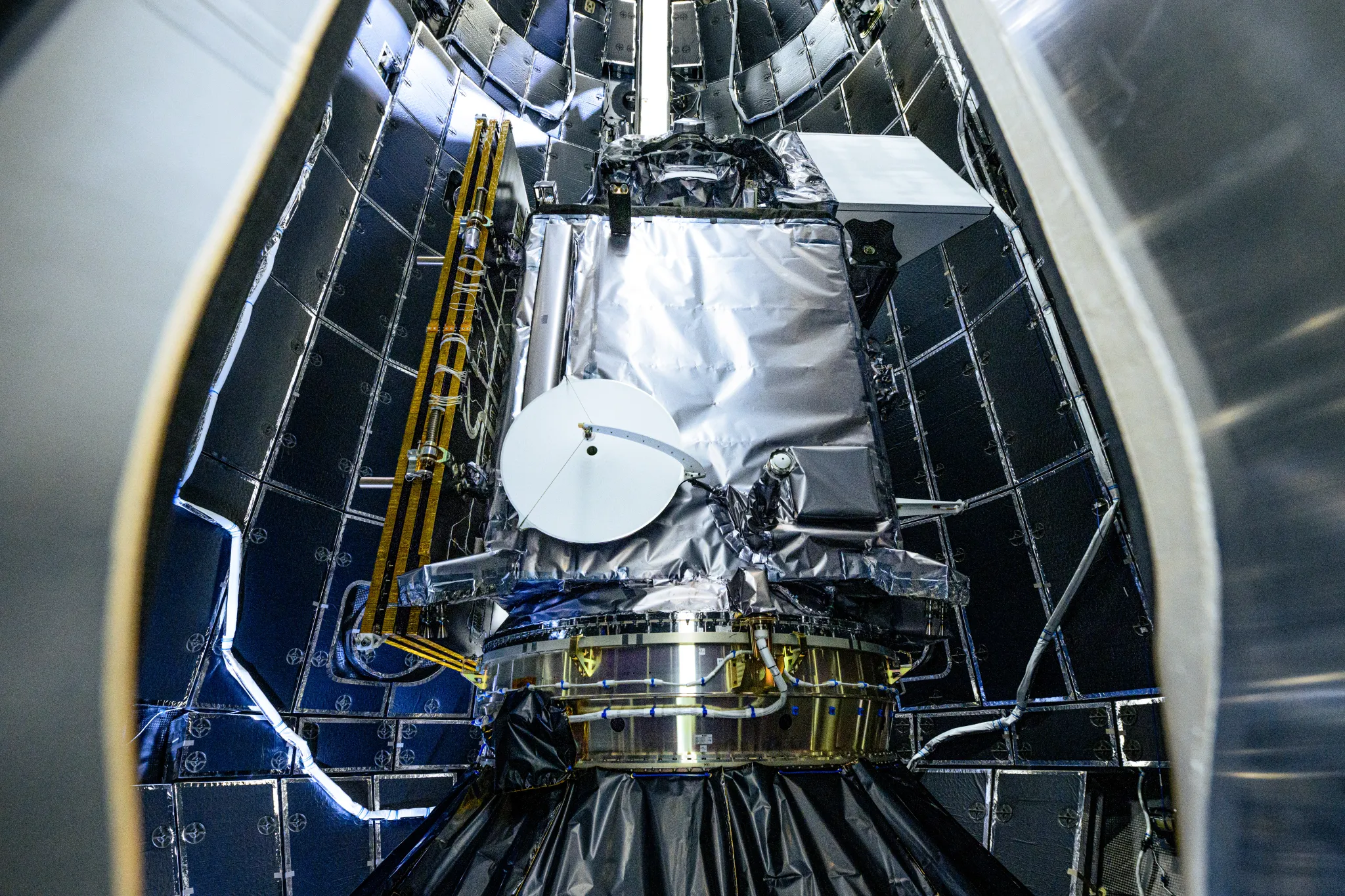Latest News
NASA Launches PACE Satellite in New Climate Mission to Study the Ocean and Atmosphere

The NASA PACE spacecraft encapsulated before launch. Photo Credit: NASA Goddard/Denny Henry
SpaceX launched NASA’s satellite mission to study ocean health, air quality, and the effects of climate change into orbit early Thursday morning.
After being rescheduled twice due to weather conditions, PACE — the Plankton, Aerosol, Climate, ocean Ecosystem satellite — launched aboard a SpaceX Falcon 9 rocket from Space Launch Complex 40 at Cape Canaveral Space Force Station in Florida at 1:33 a.m. EST on Thursday.
The mission lasted about 12 minutes before the payload was deployed to Sun-Synchronous Orbit after flying a cape polar trajectory. NASA confirmed after the launch that the spacecraft was performing as expected.
“One of the things we are looking to better understand is that relationship between the atmosphere and the ocean, and in particular aerosols. PACE is really going to be able to help us better constrain our climate and understand what we should expect,” Laura Lorenzoni, PACE program program scientist at NASA, said during the launch webcast.
Lorenzoni believes PACE will help bridge the gap of understanding how climate change will impact the future.
The PACE mission will use the instruments aboard to study climate change’s impact on Phytoplankton and other microscopic particles in both the water and the air. The satellite’s hyperspectral ocean color instrument will measure Earth’s oceans across a spectrum of ultraviolet, visible, and near-infrared light. This will enable scientists to track the distribution of phytoplankton communities. Scientists can use PACE’s data to monitor health of fisheries, track harmful algal blooms and forecast changes in the marine environment.
The spacecraft carries two polarimeters. The Hyper-Angular Rainbow Polarimeter #2 was designed and built by the University of Maryland Baltimore County. The Spectro-polarimeter for Planetary Exploration was developed by a Dutch consortium led by Netherlands Institute for Space Research, Airbus Defence, and Space Netherlands. These instruments detect how sunlight interacts with particles in the atmosphere, providing researchers with new information on atmospheric aerosols and cloud properties, as well as air quality on a larger scale.
With the combination of the instrument and the polarimeters, NASA says PACE will provide insights into the interactions of the ocean and atmosphere, and how a changing climate impacts these interactions.
Get the latest Via Satellite news!
Subscribe Now